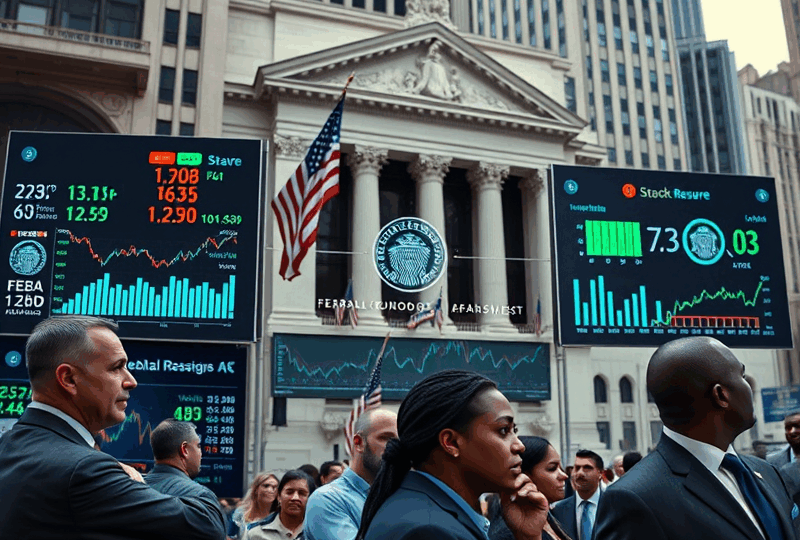
The Fed Explained: How Central Bank Policy Shapes the US Stock Market

Understanding how the Federal Reserve (commonly referred to as “the Fed”) influences the U.S. stock market is essential for any investor, whether you’re a seasoned trader or just starting your financial journey. The Fed’s decisions don’t just affect interest rates—they ripple through the entire economy, impacting everything from mortgage rates to the performance of your 401(k).
What Is the Federal Reserve?
The Federal Reserve is the central bank of the United States, established in 1913 to provide the country with a safer, more flexible, and more stable monetary and financial system. It consists of the Board of Governors in Washington, D.C., and 12 regional Federal Reserve Banks. The Fed’s primary responsibilities include managing inflation, regulating banks, maintaining financial system stability, and conducting monetary policy.
Monetary Policy Tools: How the Fed Influences the Economy
The Fed uses several tools to steer the economy:
1. Federal Funds Rate: This is the interest rate at which banks lend to each other overnight. By raising or lowering this rate, the Fed influences borrowing costs across the economy.
2. Open Market Operations (OMO): The Fed buys or sells government securities to increase or decrease the money supply.
3. Reserve Requirements: This is the amount of money banks must hold in reserve. Lowering this requirement increases the money supply.
4. Discount Rate: The interest rate the Fed charges banks for short-term loans.
How Interest Rates Affect the Stock Market
When the Fed raises interest rates, borrowing becomes more expensive. This can slow down consumer spending and business investment, leading to lower corporate earnings and, in turn, lower stock prices. Conversely, when the Fed lowers rates, it often stimulates economic activity, which can boost corporate profits and stock valuations.
Quantitative Easing and Its Market Impact
Quantitative Easing (QE) is a non-traditional monetary policy tool used during times of economic distress. The Fed buys long-term securities to inject liquidity into the financial system. This increases asset prices, including stocks, by lowering yields and encouraging investors to seek higher returns in equities.
For example, during the 2008 financial crisis, the Fed launched several rounds of QE to stabilize the economy. The result was a prolonged bull market that lasted for over a decade.
Market Expectations and Fed Communication
The stock market often reacts not just to what the Fed does, but to what it says. Fed officials regularly speak at public events, and their statements are closely analyzed by investors. The Federal Open Market Committee (FOMC) meeting minutes and press conferences are key events that can move markets.
If the Fed signals that it may raise rates in the future, markets may decline in anticipation. On the other hand, dovish comments (suggesting a more accommodative stance) can boost investor confidence.
Inflation and the Fed’s Dual Mandate
The Fed operates under a dual mandate: to promote maximum employment and stable prices. When inflation rises above the Fed’s 2% target, it may raise interest rates to cool down the economy. This can be bearish for stocks, especially in sectors sensitive to interest rates like real estate and utilities.
Historical Examples of Fed Influence
– Dot-com Bubble (2000): The Fed raised rates in the late 1990s to curb inflation, which contributed to the bursting of the tech bubble.
– Great Recession (2008): The Fed slashed rates and introduced QE to stabilize the economy, helping the stock market recover.
– COVID-19 Pandemic (2020): The Fed cut rates to near zero and implemented emergency lending programs, which supported a rapid market rebound.
How Investors Can Respond
Understanding Fed policy can help investors make informed decisions. Here are a few tips:
– Monitor FOMC meetings and Fed statements.
– Diversify your portfolio to manage interest rate risk.
– Consider sectors that perform well in different rate environments (e.g., tech during low rates, financials during rising rates).
Conclusion
The Federal Reserve plays a pivotal role in shaping the U.S. economy and stock market. While its actions are aimed at promoting long-term stability, they can cause short-term volatility. By staying informed and understanding the Fed’s tools and objectives, investors can better navigate market cycles.
Disclaimer
This article is for informational purposes only and does not constitute financial, investment, or legal advice. Always consult with a qualified financial advisor before making investment decisions. The views expressed are based on publicly available information and are subject to change without notice.
Sources
– Federal Reserve Board: https://www.federalreserve.gov
– U.S. Bureau of Economic Analysis: https://www.bea.gov
– Congressional Research Service: https://crsreports.congress.gov






